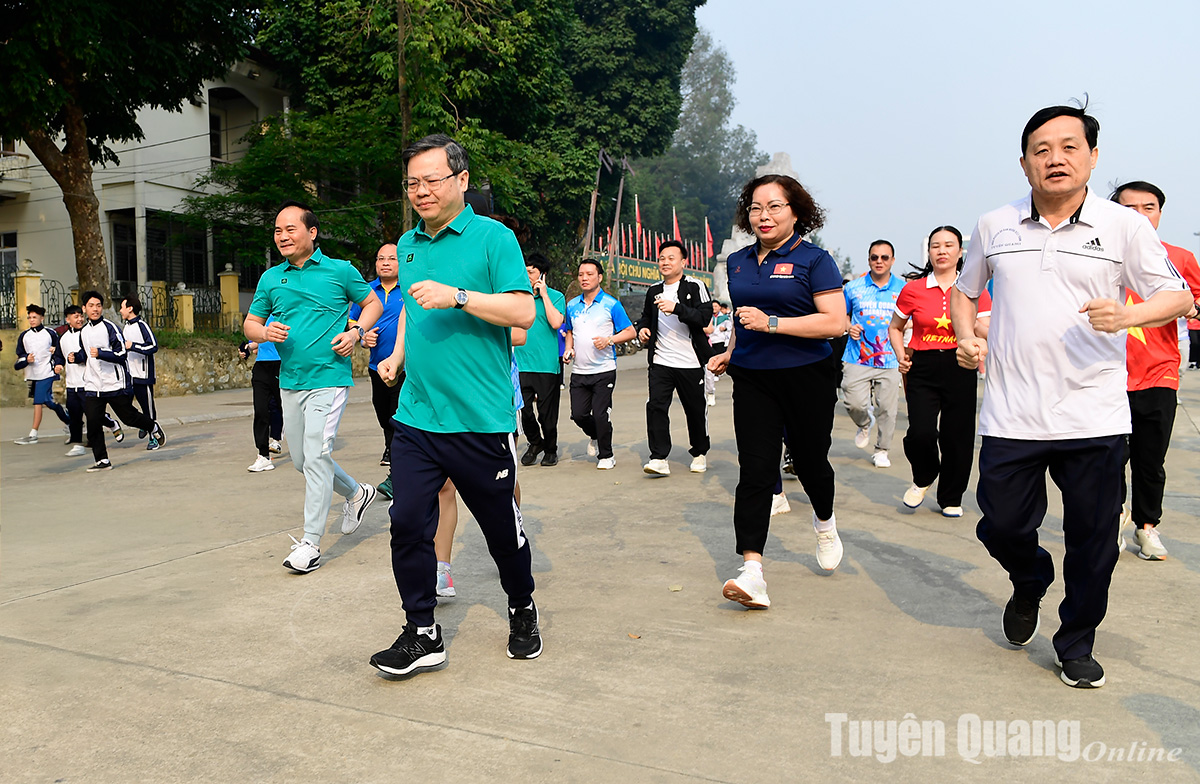Eat enough carbohydrates, hydrate your body, warm up before running and breathe deeply to increase endurance and reduce fatigue.
Many runners feel tired when running. According to experts, running without getting tired requires training your stamina, endurance, and strength of your heart, lungs, and muscles. Here's how to run for longer periods of time without stopping and resting.
Get enough carbohydrates
When you start doing strenuous activity like running, your body converts glycogen into glucose to use as fuel. People with too little glycogen in their bodies can tire out quickly. People who eat inflammatory foods or don’t fuel themselves properly can also get tired and have trouble running.
Eat nutrient-dense foods that provide carbohydrates, protein, and healthy fats at least two to three hours before running. Runners running a half marathon or longer may need to fuel up in the middle of the race with energy gels or chews to keep up their energy.
Drink enough water
According to a 2015 study by the Bond Institute of Health and Sports (Australia), dehydration significantly reduces physical performance. Athletes need to stay hydrated to avoid cramps and reduce fatigue by drinking drinks containing carbohydrates and electrolytes during and after exercise.

To run longer, control your breathing and pace yourself. Photo: Freepik
Abdominal breathing
Deep belly breathing (diaphragmatic breathing) uses the full capacity of your lungs to store oxygen and hold it there for longer. This breathing technique can therefore slow your breathing, heart rate, prevent side jolts, and keep you running for longer.
The diaphragm is a dome-shaped muscle that separates the chest from the abdomen. The correct way to breathe is to have the abdomen rise when you inhale and fall when you exhale, but the chest and shoulders do not move. Those who are not used to it can practice lying on their back, placing one hand on their stomach and one hand on their chest. Then take a deep breath until the abdomen rises and exhale.
Warm up before running
Doing some light walking stretches, high knee raises, and low-intensity aerobics for 5-15 minutes before running can warm up your muscles, increase endurance, and reduce your risk of muscle soreness or injury.
Shorten your stride
Long strides can put extra stress on your legs, while shorter, more continuous strides can help your legs absorb impact better and run longer. When your legs feel tired, slow down, elevate your legs to increase circulation, and land softly.
Runners should also keep their body straight, do not swing their arms too hard; avoid bending, hunching or bending their waist when running because it is easy to reduce lung capacity when breathing increases.
Huyen My (According to Verywell Fit, Livescience )
| Readers ask questions about bone and joint diseases here for doctors to answer |
Source link


![[Photo] The two Prime Ministers witnessed the signing ceremony of cooperation documents between Vietnam and Ethiopia.](https://vstatic.vietnam.vn/vietnam/resource/IMAGE/2025/4/15/16e350289aec4a6ea74b93ee396ada21)
![[Photo] Welcoming ceremony for Prime Minister of the Federal Democratic Republic of Ethiopia Abiy Ahmed Ali and his wife](https://vstatic.vietnam.vn/vietnam/resource/IMAGE/2025/4/15/77c08dcbe52c42e2ac01c322fe86e78b)
![[Photo] General Secretary To Lam receives Ethiopian Prime Minister Abiy Ahmed Ali](https://vstatic.vietnam.vn/vietnam/resource/IMAGE/2025/4/15/086fa862ad6d4c8ca337d57208555715)
![[Photo] National Assembly Chairman Tran Thanh Man attends the summary of the organization of the Conference of the Executive Committee of the Francophone Parliamentary Union](https://vstatic.vietnam.vn/vietnam/resource/IMAGE/2025/4/15/fe022fef73d0431ab6cfc1570af598ac)
![[Photo] Prime Minister Pham Minh Chinh holds talks with Ethiopian Prime Minister Abiy Ahmed Ali](https://vstatic.vietnam.vn/vietnam/resource/IMAGE/2025/4/15/4f7ba52301694c32aac39eab11cf70a4)



























![[Photo] General Secretary To Lam meets with veteran revolutionary cadres, meritorious people, and exemplary policy families](https://vstatic.vietnam.vn/vietnam/resource/IMAGE/2025/4/15/7363ba75eb3c4a9e8241b65163176f63)




























































Comment (0)